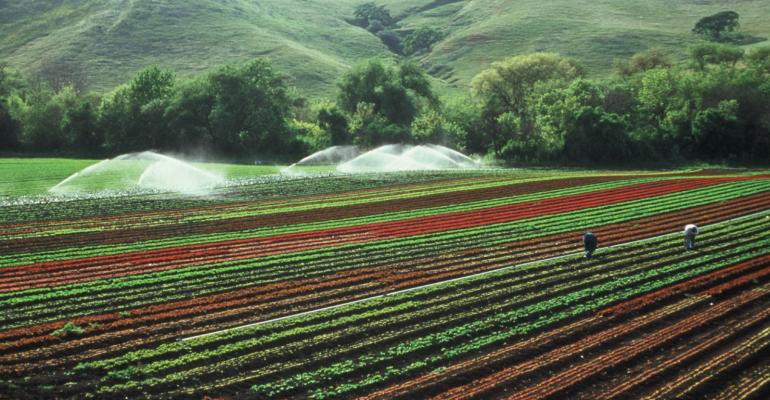By Shelley Goldberg
(Bloomberg Prophets) --Investors with a macro view of the global economy will undoubtedly take into account population growth. Even though the pace of the expansion has peaked (1962-3), the overall number of people continues to grow, led by emerging markets. Estimates have put the total at 8.4 billion by mid-2030, and 9.6 billion by mid-2050. Contributing to this statistic is that people are living longer.
A logical conclusion would be that because there is an ever-growing number of mouths to feed, there will be a greater demand for food. This rising demand poses challenges for farming and the production of sufficient food supply, forcing up the prices of agricultural commodities, making commodity agriculture futures an attractive pure play investment, an optimal choice for consistent growth and income. Right?
Wrong. Overall performance of agricultural commodities over the past few years have been as soggy as an overripe tomato. The following is a graph of the S&P GSCI Agriculture Index, a sub-index of the S&P GSCI, which tracks the agricultural commodity futures markets. Its one-year annual return as of May 22 is minus 11.73 percent.

That’s not to say that all individual agriculture futures have been faring poorly: Cotton is up 24 percent (52 weeks) and feeder cattle is up 20 percent. But not all investors are savvy enough to pick and choose the right commodity. What if, instead, an investor was long wheat, (minus 17 percent), or corn (minus 10 percent), or orange juice (minus 8 percent) or worst of all, cocoa (minus 30 percent)?
Nevertheless, an investor doesn’t need to reap the benefits (when available) solely from a pure play investment. Consider a second-generation play, such as the equities of agriculture producers, including FMC Corp. and Deere & Co., which have been yielding a much better return.
But when stock picking is not an investor’s forte, an easier, and more diversified investment approach is to let a professional choose companies, which can be accomplished by buying an index. As an example, consider the iShares Global Agriculture Index, an exchange-traded fund targeting equities and equity-related securities of U.S. and global companies involved in the production of agricultural products, fertilizers and agricultural chemicals, farm machinery, and packaged foods and meats. It seeks to replicate the performance of the Manulife Asset Management Global Agriculture Index, net of expenses. Its average annual return is 27.27 percent as of April 30.

In addition, there are more actively managed vehicles, including mutual funds and hedge funds that are focused on the sector. But what if an investor wants to avoid U.S. equities in the belief that they are overvalued, or approaching that level, in light of anticipated additional rate hikes this year? There are also international opportunities, such as in New Zealand. The S&P/NZX Farmers Weekly Agriculture Equity Index includes all New Zealand listed companies that are engaged in the agriculture industry. The index has one-year total return of 23.02 percent as of May 23.

Agriculture markets can be volatile and unpredictable. They have multiple idiosyncratic characteristics and show little correlation with the broader markets. They are greatly affected by government policies (tariffs, subsidies), infrastructure (technology, logistics), and of course, Mother Nature. But one thing is for sure: People need to eat; and when the overall stock market outperforms the futures markets, then equities are the place to be.
This column does not necessarily reflect the opinion of the editorial board or Bloomberg LP and its owners.
Shelley Goldberg is an investment adviser and environmental sustainability consultant. She has worked as a commodities strategist for Brevan Howard Asset Management and Roubini Global Economics.
For more columns from Bloomberg View, visit bloomberg.com/view





